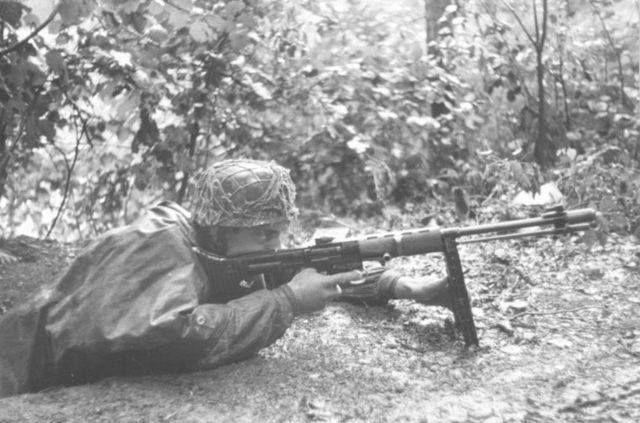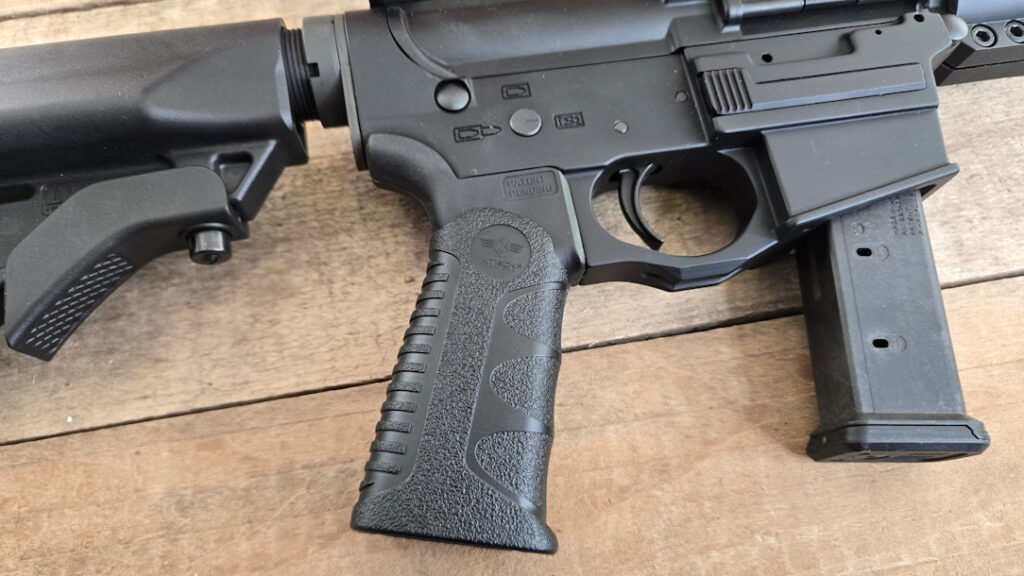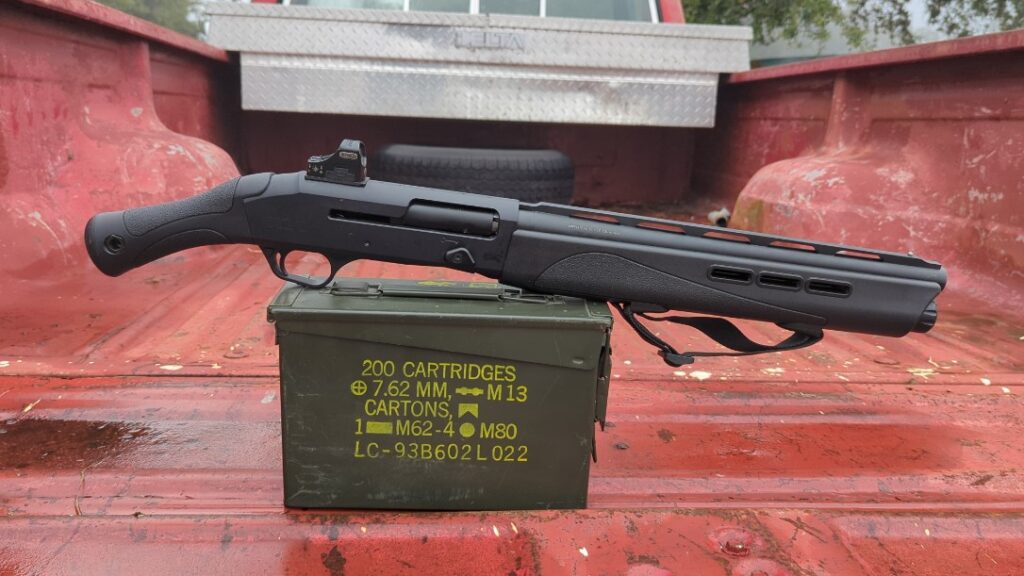I love weird guns, but more than that, I love when people are brave enough to do something different with firearm design. People being able to innovate is why we have guns like the Glock, the AR-15, and inertia-driven semi-auto shotguns. Innovation can be amazing, but it can also be flawed. Today we are going to look at some innovative, interesting gun designs that went amok throughout history.
Innovative. Interesting. Flawed?
The FG-42
Operation Mercury was a disaster for German paratroopers. German paratroopers parachuted with handguns and had to retrieve their rifles and machine guns from dropped crates. This led to massive casualties and changed Hitler’s tactics and use of paratroopers. The paratroopers sought to develop a selective-fire rifle that they could jump with and that would act as a rifle, machine gun, and submachine gun.
This led to the development of the FG-42. The FG-42 was a 7.92x57mm weapon that doesn’t neatly fit into any category of firearm. When fired in semi-auto, the gun used a closed-bolt design. It was selective-fire, and when the selector moved to full auto, the gun switched to open-bolt.
Advertisement — Continue Reading Below
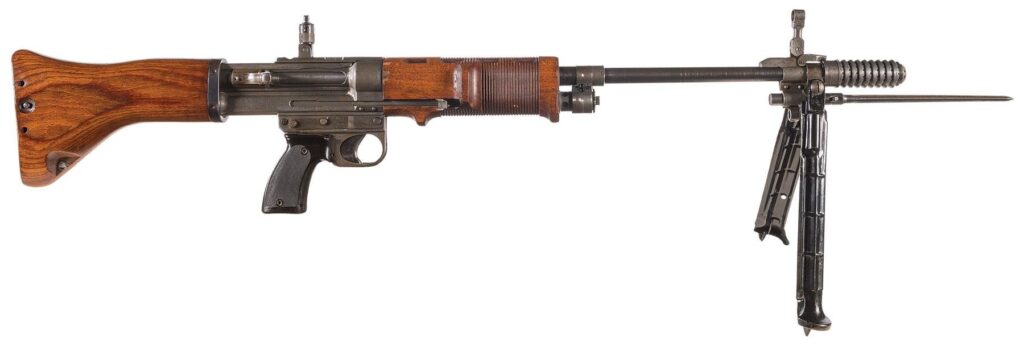
The gun utilized an inline stock design to help control muzzle rise and increase its controllability. The magazine was mounted to the side of the gun, which allowed the bolt to extend into the buttstock and provide a more compact design. The overall length was 38.4 inches, which made it shorter than the 43.7-inch KAR 98K.
While the FG-42 is all kinds of cool, it had issues. It was difficult to control in full auto, and the 20-round magazine capacity meant it ran out of ammo quickly. The bipod was flimsy and rattled, and the side-mounted magazine made the rifle unbalanced. It was also complex and expensive to produce. Only about 7,000 were made.
Advertisement — Continue Reading Below
Calico Light Weapon Systems
I might be one of the few hardcore fans of the Calico guns. The Calico Light Weapon Systems came in .22LR and 9mm and used a top-mounted, double-stack helical magazine. Magazine capacities were between 50 and 100 rounds total and mounted to the top of the gun. This allowed you to have lots of ammo in a fairly small amount of space.
The 9mm versions of these innovative guns were roller delayed, which resulted in light recoil and an easy-to-control gun. The ammunition sat on top of the gun and created a balanced gun, and also helped tame muzzle rise. The gun was surprisingly ambidextrous with downward ejection and a multitude of ambidextrous controls.
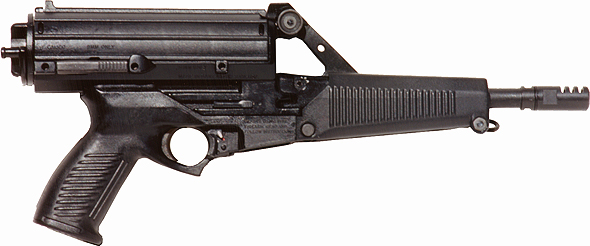
Advertisement — Continue Reading Below
For the era, the use of polymer in the receiver was new and ambitious. It helped drive the price lower and increase production capability. The downsides were also tied to that innovative magazine. Some magazines had reliability issues, leading these guns to be considered unreliable.
The magazine placement leads to height-over-bore issues, and 9mm tends to be used at close ranges. The rear sight is placed on the magazine, which means its indexing wouldn’t always be the same. It’s also difficult to mount optics to the gun. A lot of people didn’t see the advantages of the helical magazine, and the 1994 AWB more or less killed the company’s momentum.
The Pedersen Device
The Pedersen device wasn’t a gun, but an innovative conversion kit. World War I showed the need for close-range, rapid-fire weapons, namely submachine guns. Spinning up development and deployment of submachine guns would be slow, so what if you could convert a M1903 Springfield rifle into a semi-automatic weapon?
Advertisement — Continue Reading Below
John Pedersen developed the Pedersen device, which would drop into a Springfield M1903 and convert it to a semi-auto .30 caliber weapon. The .30-18 caliber cartridge was proprietary but would later inspire the 7.65 Longue. It fired from a 40-round magazine. It was a simple blowback, and at its core was basically a pistol without a frame or grip.
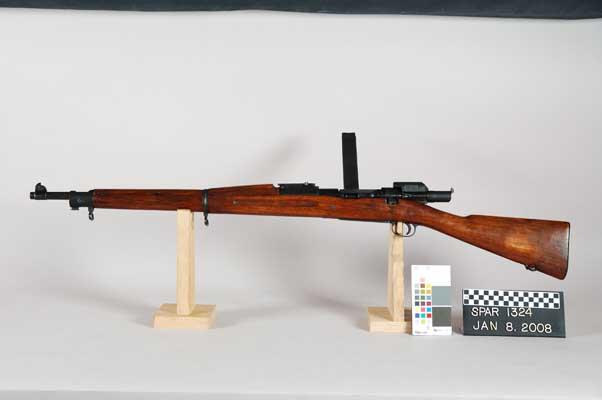
The project was designed to be a part of the Allied Spring offensive of 1919. An entire infantry division would be armed with it. Soldiers had 40 rounds and low recoil. They could storm trenches and rapidly fight the enemy at close range.
Advertisement — Continue Reading Below
Sadly, it had reliability issues. The extractor was small, and the firing pin was also the ejector. It wasn’t ready for prime time in the trenches. The cartridge was also underpowered. The war also ended before it could be issued and used. Sadly, the Army destroyed them, so they became rare.
The Nambu Type 14
Japanese military sidearms are an interesting mix of interesting and terrible. The Nambu Type 14 reflects that well. The Nambu Type 14 was first completed in 1902 and presented a locked-breech pistol design, which was rare and innovative for the era. The gun is recoil-operated and fires an 8x22mm Nambu cartridge.
Adoption was slow, with the Navy only adopting the gun in the 1920s, and in 1926, the Army adopted the pistol, which served until the end of WWII. Besides being a locked breech, it had interesting and innovative features for the era, which included a magazine safety. The striker-fired design used an interesting striker that was both the firing pin and the striker spring housing.
Advertisement — Continue Reading Below
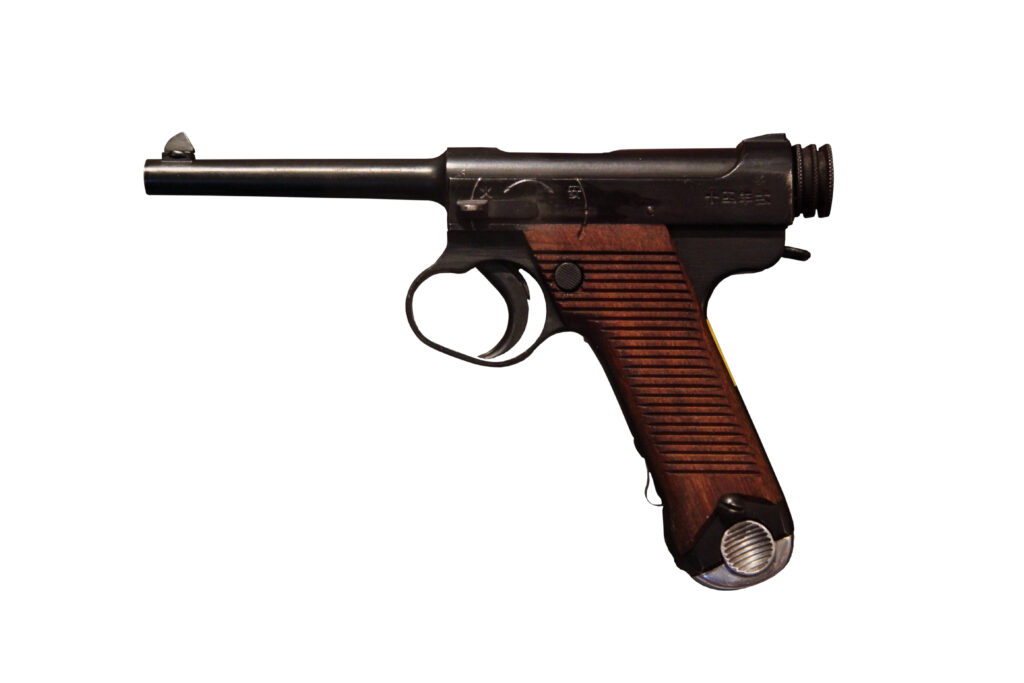
The Nambu Type 14’s good features end there. The gun had a fragile construction, but one could argue that this was due to poor and cheap construction rather than a design flaw. Small parts were known to be fragile; the striker was weak and would break or offer light strikes.
The 8x22mm Nambu was also somewhat anemic and reportedly poorly made, which led to reliability issues. The magazine was also an issue. The slanted grip made reloads difficult; the magazine did not eject, and had to be stripped from the gun. Oh, and the safety required a second hand to activate. Bill Ruger was inspired by the Nambu and created the Ruger Standard.
Advertisement — Continue Reading Below
The AN-94
Russian arms design tends to create guns as simple as possible, or overly complicated Rube Goldberg machines posing as guns. The AN-94 falls into the second category. The gun’s main claim to fame is the recoil impulse system. Essentially, the gun delays the recoil of the gun until the first two rounds are fired.
It does this by featuring a barrel and receiver that move rearward as the first shot fires and the second round is fired before this rearward motion is complete. This delays the recoil impulse. I think I’ve explained that right because it seems overly complicated, and no GIFs could help my crayon-eating brain figure it out.

Advertisement — Continue Reading Below
It also had a hyper-burst feature that fired a two-round burst at 1,800 rounds per minute. This allowed shooters to engage with two rounds before they felt recoil. A weird feature of the gun is the offset magazine, which is necessary to work with the recoil impulse housing. It’s not noticeable in flat photos, but in real life, it’s rather fascinating.
The downsides are the predictable high cost and complicated manufacturing. It also seems to be a fairly delicate system that could easily break or malfunction. The AN-94 has seen some limited use, and somehow, there is one in the States bouncing around big YouTubers. The gun’s innovative, but might be a little too innovative for the time being.
Innovative But Flawed
I love seeing innovation, I love seeing the weird and odd, but admittedly, sometimes weird and odd just doesn’t work all that well. Still, if you’re an enterprising gun designer, be innovative, be willing to take some risks, and please, release some of this cool stuff to the public.
